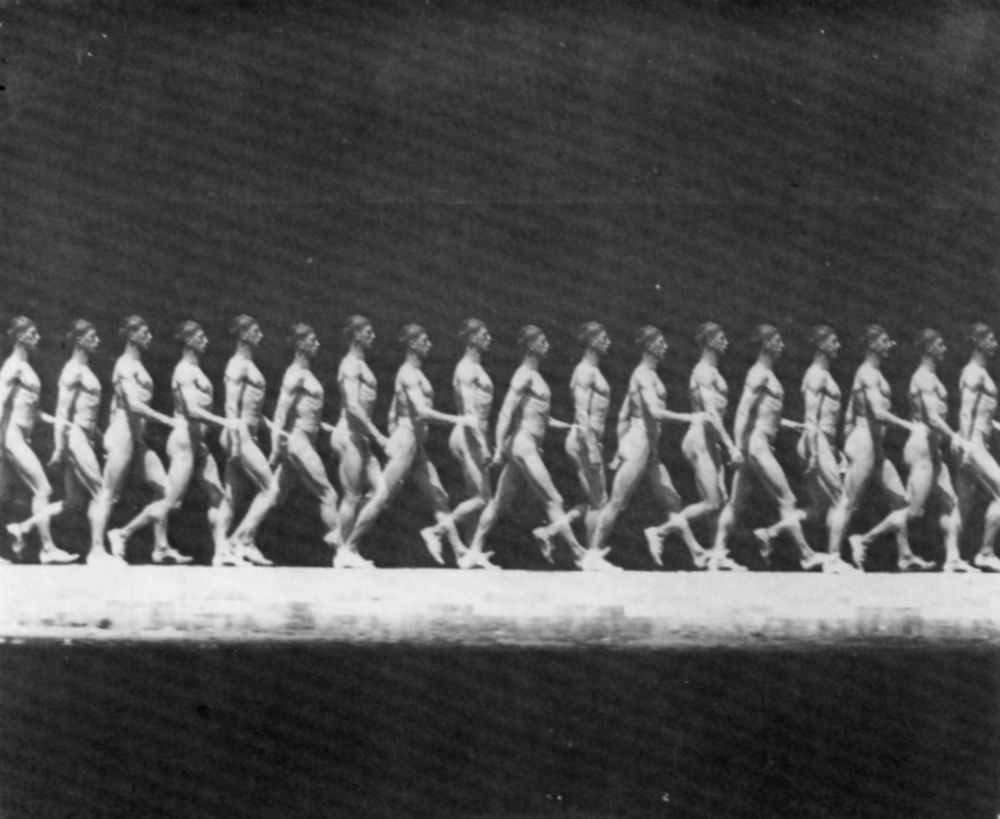你是否也有過跟人討論動作的時候
大家各講各的 最後發現其實是同一件事情的狀態呢
Do you ever experience that when you discuss some movement with others,
everyone has different thoughts but finally you found you all talk about the same thing?
動作本身非常的有趣
假如你將一個動作無限分割
你會得到無數多的靜態姿勢
The motion itself is fascinating.
If you dissect the movement repeatedly,
you'll get infinite posture.
 |
| http://www.zeno.org - Contumax GmbH & Co. KG |
是搞清楚你在描述的是姿勢還是動作
So here is the thing,
knowing you are describing POSTURE or MOVEMENT

我們用步態來舉例
Heel strike的時候
髖關節呈現屈曲, 踝關節呈現背曲
這是屬於"姿勢"的描述
Let's take gait as example.
In heel strike, the hip is flexion and the ankle is dorsiflexion.
It is description of posture.
而從Heel Strike到Loading Response之間
髖關節需要伸展, 踝關節執行蹠曲
這是屬於"動作"的描述
From Heel strike to Loading Response,
the hip is extending and the ankle is plantarflexing.
It is the description of the movement.
所以綜合起來
在Heel Strike時
髖關節在屈曲位置, 但要執行伸展動作
而踝關節在背曲位置, 但要執行蹠曲動作
To sum up, during the heel strike,
the hip is flexion but extending, the ankle is dorsiflexion but plantarflexing.
更複雜一點的情況
我們需要考慮到重力,速度, 不同平面以及相對移動的影響
讓我們回頭再看一次髖關節
In the advanced condition,
we need to consider the gravity, velocity, planes, and relative movement.
Let's go back to hip again
髖關節位置是屈曲, 內收, 以及外轉
而執行的動作是伸展, 內收, 以及內轉
所以我們可以看出 重心會往承重腳的方向移動
The hip posture is flexion, adduction, and external rotation
The hip movement is extending, adducting, and internal rotating.
So it obvious that our center of mass is moving toward the front leg.
而臀中肌的主要動作是外展以及內轉
乍看之下似乎呈現一個平面拉長, 一個平面縮短
但因為骨盆的轉動速度比股骨快, 所以反而呈現的是髖關節的外轉
所以臀中肌在這個時期在兩個平面上都呈現離心收縮
為下個階段的移動儲存能量
The GluMed is the muscle that can abducting and internal rotating.
Seems like this important stabilizer is long on frontal and short on transverse plane.
However, because the pelvic movement is faster than our femur,
so now the femur is INTERNAL rotating but the hip joint is EXTERNAL rotating.
That make you GluMed eccentric loading on both planes, storing energy for next phase.
 |
| Reiman et al. (2012) |
身為物理治療師與動作專家
這就是我們的日常
And that's just part of our daily movement.
As physical therapists and movement specialists,
it's our daily work.
下次在跟其他人討論時
先確定大家有共同的基準點
才不會發生溝通不良的失能:P
Next time before you initiating any discussion,
making sure you all on the same page.
To prevent possible communication dysfunction:P





